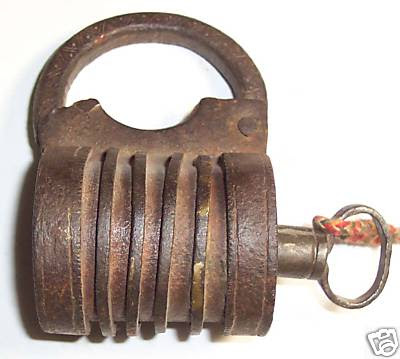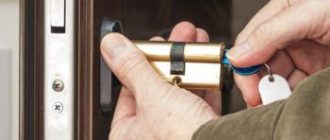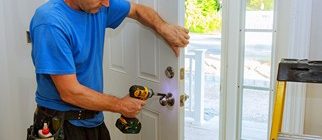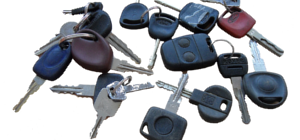
Restore Your Antique And Old Locks
Restore your antique and old locks with our expert tips and techniques. Whether you have a precious heirloom or a unique vintage piece, we have the knowledge and experience to bring it back to life.
Unlock the beauty of your antique locks.
Why Restore Your Antique And Old Locks?
Locks play a crucial role in our everyday lives. They provide security and protect our belongings. But there is something intriguing and special about antique and old locks. These locks have a rich history and a unique charm that cannot be found in modern locks.
By restoring your antique and old locks, you are not only preserving a piece of history but also ensuring that they work as intended. Over time, locks can become rusty, lose their functionality, or even break. Restoring them can bring them back to their former glory.
Restoring antique and old locks requires expert knowledge and techniques. Our team of professionals has years of experience in working with locks of all ages. We understand the complexities involved in restoring these delicate pieces and use specialized tools and materials to ensure their longevity.
When you restore your antique and old locks, you are not just investing in a functional lock, but also in a piece of art. These locks were meticulously crafted by skilled artisans of the past, and restoring them showcases their craftsmanship and attention to detail.
Moreover, antique and old locks are a great conversation starter. They have a unique aesthetic appeal that can enhance the overall look and feel of any space. Whether you want to showcase them in your home or office, restored antique and old locks are sure to grab attention and spark intrigue.
So, if you have antique and old locks that are in need of restoration, don’t hesitate. Our team of experts is here to help you bring back the beauty and functionality of these valuable pieces. Contact us today to get started on your lock restoration journey!
Benefits of Restoring Your Locks
When it comes to locks, antique and old ones hold a special charm. However, over time, these locks can become worn out and lose their functionality. That’s when restoration becomes important. Restoring your locks can bring numerous benefits:
- Preserve the historical value of your antique locks.
- Enhance the aesthetics of your old locks.
- Extend the lifespan of your locks.
- Improve the functionality of your locks.
- Enhance the security of your property.
- Avoid the need for expensive lock replacements.
- Reap the rewards of a unique and authentic lock.
- Revive the sentimental value of your locks.
By restoring your antique and old locks, you can ensure that they continue to serve their purpose while preserving their historical and sentimental value. So why wait? Don’t let your locks lose their charm – restore them today!
Understanding Antique Locks
When it comes to old locks, understanding their unique characteristics is crucial for a successful restoration process. Antique locks hold so much more than just sentimental value; they represent a piece of history that deserves to be preserved.
Before embarking on the journey to restore your antique locks, it is important to familiarize yourself with their different types and functions. Here are a few key points to consider:
- Old vs. Antique: While the terms “old” and “antique” are often used interchangeably, there is a distinct difference. An old lock refers to any lock that has aged over time, while an antique lock is typically more than 100 years old and holds historical significance.
- Restore with Care: Restoring antique locks requires expertise and delicate handling. These locks may have delicate mechanisms, intricate designs, or unique features that need to be preserved during the restoration process.
- Know Your Lock Type: Antique locks come in a variety of types, including padlocks, mortise locks, rim locks, and lever locks. Each type has its own design, functionality, and challenges when it comes to restoration.
- Consider the Materials: Antique locks can be made from various materials, such as brass, iron, or steel. Understanding the characteristics of these materials can help you determine the best restoration techniques and products to use.
- Expert Assistance: If you are unsure about restoring your antique lock on your own, it is always wise to seek the help of a professional locksmith who specializes in antique lock restoration. They can provide valuable insights and ensure that the lock is restored to its original beauty.
Remember, restoring antique locks not only extends their lifespan but also allows you to enjoy their beauty and functionality for years to come. With proper understanding and care, your antique locks can continue to be treasured heirlooms for future generations.
Tools for Restoring Locks
When it comes to restoring antique and old locks, having the right tools is essential. With the proper equipment, you can easily and effectively restore your locks to their former glory. Here are some must-have tools for restoring locks:
1. Lock Picking Set: A lock picking set is essential for opening antique locks without damaging them. It allows you to gently manipulate the lock’s mechanism and unlock it without a key.
2. Lock Lubricant: To ensure smooth operation of your locks, it’s important to use a high-quality lock lubricant. This will help reduce friction and prevent rust, keeping your locks functioning properly.
3. Lock Repair Kit: A lock repair kit contains various tools and materials for fixing minor issues with your locks. It usually includes replacement springs, pins, and other small parts that may need to be replaced during the restoration process.
4. Key Cutting Machine: If the original key for your antique or old lock is missing or damaged, a key cutting machine is necessary for creating a new one. This tool allows you to accurately cut a key that fits your lock perfectly.
5. File Set: A file set is useful for smoothing rough edges and shaping the keys and lock parts. It allows you to make precise adjustments and ensure that everything fits together properly.
6. Cleaning Supplies: To restore the appearance of your locks, you’ll need various cleaning supplies such as a wire brush, metal polish, and cleaning solution. These tools will help remove dirt, grime, and tarnish, revealing the original beauty of your antique locks.
By using these tools and following expert tips and techniques, you can effectively restore your antique and old locks to their former glory. Whether you’re a professional locksmith or a DIY enthusiast, having the right tools will make all the difference in your restoration projects.
Essential Tools for Lock Restoration
Restoring antique and old locks requires proper tools to ensure delicate and precise work. Here are some essential tools you’ll need to successfully restore and revive your old locks:
1. Lock Picks: Lock picks are essential for manipulating the internal mechanisms of locks. They come in various sizes and shapes to fit different types of locks and help you unlock them without damaging the intricate parts.
2. Tension Tools: Tension tools are used in combination with lock picks to apply tension to the lock’s core. This allows for the manipulation of the lock pins or levers, enabling you to unlock the lock.
3. Key Extractors: Key extractors are specialized tools used to remove broken or stuck keys from locks. They help you avoid further damage to the lock and make it easier to restore it to working condition.
4. Key Cutting Machines: If you need to recreate lost keys for your old locks, a key cutting machine is a must-have tool. These machines accurately duplicate keys and ensure they fit perfectly into the lock, allowing for smooth operation.
5. Lubricants and Cleaners: Proper lubrication and cleaning are crucial for the smooth functioning of locks. You’ll need high-quality lubricants and cleaners to remove debris, rust, and dirt from the lock’s components and keep them in optimal condition.
6. Precision Screwdrivers: Lock restoration often requires disassembling and reassembling lock parts. Precision screwdrivers in various sizes and types will help you easily handle the tiny screws and bolts in locks without causing any damage.
7. Files and Sandpaper: If your old locks have rust or rough edges, files and sandpaper will come in handy for smoothing and shaping the metal surfaces. These tools will help you restore the lock’s aesthetics and improve its overall appearance.
8. Vises and Clamps: To securely hold the lock during restoration, vices and clamps are essential. These tools provide stability and precision, allowing you to apply the necessary force without damaging the lock or injuring yourself.
9. Magnifying Glass or Loupe: A magnifying glass or loupe will help you inspect the intricate details of the lock’s components. This tool is especially useful for identifying small imperfections, rust, or other issues that need attention during the restoration process.
With these essential tools at your disposal, you’ll be well-equipped to restore and revive your old locks to their former glory. Unlock the beauty and history of your antique locks with expert precision and care!
Advanced Tools for Lock Restoration
When it comes to restoring locks, especially old and antique ones, having the right tools is essential. These advanced tools are specially designed to handle the delicate and intricate mechanisms of vintage locks, ensuring that you can restore them to their former glory.
One of the key tools for lock restoration is the lock pick set. This set includes a variety of picks and tension wrenches that allow you to manipulate the pins inside the lock and open it without damaging the mechanism. With the right techniques, you can gently restore even the most stubborn locks without causing any further harm.
Another important tool is the lock repair kit. This kit typically includes a variety of replacement parts such as springs, pins, and cam plates. These parts are often specific to each lock model, ensuring a perfect fit and smooth operation once they are replaced. With the right tools and supplies, you can easily repair and restore any old lock to its original functionality.
Additionally, having precision measuring tools is crucial for lock restoration. These tools, such as calipers and micrometers, allow you to accurately measure the dimensions of various lock components. This precision ensures that you can find exact replacements if needed and guarantees a perfect fit during the restoration process.
Finally, don’t forget the importance of cleaning and lubricating tools. A lock restoration project often involves removing years of dirt, grime, and rust from the lock’s surface. Specialized cleaning brushes, solvents, and lubricants are necessary to ensure that the lock operates smoothly and reliably once it is fully restored.
With these advanced tools at your disposal, you can confidently restore any old or antique lock to its former beauty and functionality. Whether you’re a locksmith or a passionate collector, investing in high-quality tools is the key to successful lock restoration.
Cleaning and Lubricating Your Lock
As part of the restoration process, cleaning and lubricating your old, antique, and worn-out locks is an essential step. Over time, locks can become dirty and jammed with debris, causing them to function poorly or not at all. By following the expert tips and techniques provided, you can restore your locks to their former glory.
|
Cleaning your lock |
Lubricating your lock |
|
1. Start by removing the lock from its door or container. This will make the cleaning process easier and more efficient. 2. Use a soft brush or toothbrush to gently remove any dirt, dust, or debris from the lock. Be sure to pay special attention to the keyhole, as this area can accumulate a significant amount of grime over time. 3. For stubborn dirt or rust, you can use a mild detergent or rust remover. Apply the solution to a soft cloth and carefully scrub the affected areas. 4. Rinse the lock with clean water and pat it dry with a soft towel or allow it to air dry completely. |
1. After cleaning, it is crucial to lubricate your lock to ensure smooth operation. Apply a small amount of graphite powder or silicone-based lubricant to the keyhole and other moving parts of the lock. 2. Gently insert and remove the key several times to distribute the lubricant evenly and help it penetrate the internal mechanisms of the lock. 3. Wipe away any excess lubricant with a clean cloth to prevent it from attracting dust or debris. |
By properly cleaning and lubricating your lock, you can extend its lifespan and improve its performance. Remember to handle old and antique locks with care and seek professional assistance if needed. With expert tips and techniques, you can restore your locks to their former glory and enjoy their charm for years to come.
Choosing the Right Cleaning Products
When it comes to restoring old locks and antique hardware, using the right cleaning products is crucial. The wrong products can potentially damage the delicate surfaces or remove the aged patina that adds to the charm of your antique pieces.
Here are some expert tips and techniques to help you choose the right cleaning products for your project:
1. Research and Understand the Materials: Before selecting a cleaning product, make sure you research and understand the specific materials used in your antique locks. Different materials may require different cleaning methods and products. For example, brass may require a different product than steel or iron.
2. Avoid Abrasive Cleaners: When dealing with delicate antique surfaces, it is best to avoid abrasive cleaners. These can scratch or damage the material, compromising its integrity. Look for gentle and non-abrasive cleaning solutions specially formulated for use on antique hardware.
3. Test the Product: Before applying any cleaning product to the entire surface of your antique lock, test it on a small inconspicuous area. This will help you determine if the product is compatible with the material and will not cause any adverse effects.
4. Seek Professional Advice: If you are uncertain about the best cleaning products to use for your particular antique locks, consider seeking advice from professionals or restoration experts. They can provide you with specific recommendations based on their experience and expertise.
Remember, the goal is to restore the old locks and antique hardware while preserving their original beauty. By choosing the right cleaning products, you can ensure that your restoration project is a success.
Proper Lubrication Techniques
When it comes to restoring antique locks, proper lubrication techniques are crucial for ensuring optimal performance and longevity. A well-lubricated lock not only operates smoothly but also helps prevent premature wear and damage. Here are some expert tips for lubricating your antique locks:
| 1. Choose the right lubricant: | Not all lubricants are suitable for antique locks. It is recommended to use a light machine oil or graphite powder specifically designed for lock mechanisms. Avoid using heavy oils or WD-40 as they can attract dust and debris, potentially leading to lock jamming. |
| 2. Clean the lock: | Before applying any lubricant, make sure to clean the lock thoroughly. Use a soft brush and a mild solvent to remove any dirt, rust, or old lubricant residue. This will ensure that the lubricant can penetrate the lock mechanism effectively. |
| 3. Apply the lubricant: | Apply a small amount of the chosen lubricant to the key and insert it into the lock. Turn the key several times to distribute the lubricant evenly across the lock’s internal components. Avoid over-lubricating, as excess lubricant can attract dirt and gum up the mechanism. |
| 4. Test and adjust: | After lubricating the lock, test its operation by turning the key. If the lock still feels sticky or stiff, you may need to apply more lubricant or adjust the internal components. Use a lock lubricant-compatible cleaner to remove any excess lubricant that may have seeped out during the testing process. |
| 5. Regular maintenance: | To keep your antique locks in optimal condition, periodically check the lubrication and clean the lock if necessary. Over time, the lubricant may dry out or accumulate dirt, resulting in decreased performance. Regular maintenance will help ensure that your antique locks continue to function smoothly for years to come. |
By following these proper lubrication techniques, you can restore and maintain the performance of your antique locks, preserving their history and functionality.
Repairing Damaged Locks
When it comes to old and antique locks, it’s not uncommon to find them in various states of disrepair. Years of use and neglect can take a toll on these delicate mechanisms, leaving them damaged and in need of attention.
If you have an old or antique lock that is not functioning properly, don’t worry! There are expert tips and techniques to help you restore it to its former glory. Here’s what you need to do.
First, carefully assess the condition of your lock. Look for any signs of rust, corrosion, or physical damage. Take note of any missing or broken parts.
Next, gather the necessary tools and supplies. Depending on the specific issue, you may need a variety of tools such as a screwdriver, pliers, or a file. Additionally, you’ll want to have lubricants, cleaning solutions, and replacement parts on hand.
Once you have everything ready, it’s time to start the repair process. Begin by gently cleaning the lock, removing any dirt, grime, or rust. Use a solution specifically designed for lock cleaning to ensure you don’t cause any further damage.
If there are any broken parts, carefully remove them and replace them with new ones. Make sure you have the correct replacement parts that are compatible with your specific lock model.
Once everything is clean and the damaged parts have been replaced, it’s time to lubricate the lock. Use a high-quality lubricant to ensure smooth operation. Apply the lubricant to all moving parts and ensure they are properly coated.
Finally, test the lock to make sure it’s functioning smoothly. Insert the key and try turning it. If the lock is still not working properly, you may need to adjust some of the internal mechanisms or seek professional assistance.
Remember, repairing old and antique locks requires patience, precision, and the right tools. With expert tips and techniques, you can restore these beautiful pieces of history to their former glory.
So don’t let a damaged lock ruin the charm of your antique collection. Take the necessary steps to restore and preserve these old locks, and continue to enjoy their timeless beauty and functionality.
Common Problems with Antique Locks
When restoring your antique locks, you may encounter several common problems that need to be addressed. These problems can range from minor issues to more complex ones. Here are some common problems you might encounter:
1. Rust and corrosion: Over time, antique locks can develop rust and corrosion, which can affect their functioning. To restore the locks, you will need to remove the rust and apply a protective coating.
2. Worn-out keyholes: Antique locks often have keyholes that have become worn out due to repeated use. You will need to carefully reshape and rebuild the keyholes to ensure smooth and reliable operation.
3. Misalignment: Over the years, the alignment of antique locks can shift, causing them to malfunction. This can be due to various reasons, such as wooden doors swelling or contracting with changes in humidity. To restore the locks, you will need to realign the components properly.
4. Broken or missing parts: Antique locks are susceptible to having broken or missing parts, such as springs, levers, or bolts. These parts will need to be carefully repaired or replaced to ensure the lock functions correctly.
5. Paint and dirt buildup: Antique locks can accumulate layers of paint and dirt over the years, affecting their appearance and functionality. You will need to remove the buildup and restore the lock’s original finish.
These are just a few of the common problems you may encounter when restoring your antique locks. It is important to have the necessary knowledge and expertise to address these issues properly to ensure the locks are restored to their original condition and functionality.
Techniques for Repairing Damaged Locks
When it comes to restoring old locks and bringing them back to their former glory, there are several techniques you can employ to repair any damage that may have occurred over the years. Whether it’s a rusty lock that has been neglected for far too long, or a lock that has suffered from wear and tear, these techniques will help you restore your locks to their optimal functioning state.
First, it’s important to assess the damage and understand what needs to be repaired. This can involve removing the lock from its housing and carefully examining it for any signs of wear, corrosion, or broken parts.
If the lock is rusty, you can start by soaking it in a rust remover solution to loosen the rust and make it easier to remove. Once the rust has been loosened, you can use a small wire brush or sandpaper to gently scrub away the remaining rust. Be careful not to apply too much pressure, as this can cause further damage to the lock.
If the lock has broken or missing parts, you may need to replace them. This can involve finding replacement parts online or at a locksmith store. Once you have the replacement parts, carefully remove the damaged parts and replace them with the new ones. Make sure to follow any instructions provided with the replacement parts to ensure proper installation.
In some cases, the lock may be jammed or not turning smoothly. This can be caused by debris or dirt that has accumulated inside the lock. To fix this, you can use a can of compressed air to blow out any debris or use a small brush to gently dislodge any dirt. Once the lock is clean, you can apply a small amount of lubricant to help it turn smoothly again.
Remember, restoring old locks can be a delicate process, so it’s important to take your time and proceed with caution. If you’re unsure about any step or encounter any difficulties, it’s always best to seek the help of a professional locksmith who specializes in restoring old locks.
| Assessing the damage |
| Soaking in rust remover solution |
| Removing and replacing broken parts |
| Cleaning out debris and dirt |
| Applying lubricant for smooth operation |
Replacing Missing Parts
When restoring old or antique locks, it is common to encounter missing parts. Whether it’s a small bolt, a spring, or a decorative element, these missing pieces can affect the functionality and appearance of your lock. However, fear not! With expert tips and techniques, you can easily replace these missing parts and bring your lock back to its original glory.
Gather Information
Before you start the process of replacing missing parts, it is essential to gather as much information as possible about your lock. This includes its make, model, and any distinguishing features. If you have an old key that belongs to the lock, it can provide valuable insight into its design and functionality.
Research and Source
Once you have gathered all the necessary information, conduct thorough research to identify the missing parts and their availability. Many locksmith supply stores and online marketplaces specialize in antique and old lock parts. Look for reputable sources and compare prices to ensure you find the best options for your specific needs.
Measurements and Identification
When replacing missing parts, it is crucial to ensure proper measurements and identification. Take accurate measurements of the remaining parts and compare them to the replacement options available. Be mindful of the materials used, as they should match the original components to maintain the authenticity of the lock.
Installation and Adjustment
Once you have obtained the necessary replacement parts, it is time to install and adjust them to fit your lock. Follow expert techniques and guidelines to ensure a proper fit and functionality. This may require some trial and error, but with patience and attention to detail, you can successfully restore your lock to its full potential.
Note: If you are uncomfortable or unsure about replacing missing parts yourself, it is recommended to consult a professional locksmith who specializes in antique and old lock restoration.
With these tips and techniques, you can confidently restore your old or antique locks by replacing missing parts. Unlock the potential of your cherished locks and enjoy their beauty and functionality once again.
Refinishing and Polishing Your Lock
As a proud owner of antique locks, it is essential to restore and maintain them properly. Refinishing and polishing your lock can help revive its original charm and beauty. Here, we provide expert tips and techniques to guide you through the process.
Restoration starts with thoroughly cleaning your antique lock. Use a mild cleaner and a soft cloth to remove any dirt or grime that may have accumulated over the years. Be gentle and take your time to ensure that all surfaces are clean.
After cleaning, it is time to refinish the lock. Begin by choosing a suitable finish for your lock, keeping in mind its material and the desired outcome. There are various finishes available, such as brass, nickel, or chrome, each offering a distinct look.
Before applying the finish, make sure you have prepared the lock properly. Remove any existing finish using a paint remover or a mild abrasive, carefully following the instructions provided by the manufacturer. This step will allow the new finish to adhere effectively.
Once the lock is ready, apply the chosen finish using a brush or a spray. Work in thin, even coats, allowing each coat to dry before applying the next one. This process will ensure a smooth and uniform finish.
After the finish has dried, it is time to polish your lock. Use a soft cloth or a polishing compound specifically designed for the lock’s material to bring out its lustrous shine. Gently rub the surface in circular motions, paying attention to any intricate details.
Finally, protect your newly refinished and polished lock by applying a thin coat of wax or a specialized sealant. This step will help prevent tarnishing and keep your antique lock looking beautiful for years to come.
Remember, refinishing and polishing your lock is a delicate process that requires patience and attention to detail. If you are uncertain or feel uncomfortable, it is always best to consult a professional locksmith or restoration expert for assistance.
By following these expert tips and techniques, you can restore your antique locks and preserve their historical value while enjoying their exquisite craftsmanship.
Q&A:
What is “Restore Your Antique And Old Locks – Expert Tips and Techniques” about?
“Restore Your Antique And Old Locks – Expert Tips and Techniques” is a comprehensive guide that provides step-by-step instructions on how to restore antique and old locks. It covers various techniques and tips from experts in the field.
Who is this book suitable for?
This book is suitable for anyone who is interested in restoring antique and old locks. It is particularly helpful for locksmiths, collectors, and enthusiasts who want to learn more about the process and techniques involved.
Does this book include detailed instructions?
Yes, “Restore Your Antique And Old Locks – Expert Tips and Techniques” includes detailed instructions on how to restore antique and old locks. It provides a step-by-step approach and covers various techniques and tips to help you achieve the best results.
Are there any illustrations or pictures in this book?
Yes, this book contains numerous illustrations and pictures that accompany the instructions. They are designed to provide visual references and help you better understand the restoration process.
Can beginners use this book?
Yes, beginners can definitely use this book to learn how to restore antique and old locks. The instructions are clear and easy to follow, and the book also provides valuable tips and techniques that can benefit both beginners and experienced individuals.
What does this book cover?
This book covers expert tips and techniques for restoring antique and old locks.






